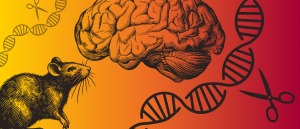What precursor polymers can reveal about pathological proteins

Original story from Tokyo Metropolitan University (Japan).
A crucial ‘precursor’ has been identified in pathological protein fibril formation.
Researchers from Tokyo Metropolitan University (Japan) have applied ideas from polymer physics to illuminate the mechanism behind a key pathology in Alzheimer’s disease (AD), the formation of tau fibrils. They showed that fibril formation is preceded by the birth of large protein clusters, mirroring the crystallization of polymers. Crucially, dissolving these clusters helped to prevent fibrils forming in solution. Their work signals a paradigm shift for the development of treatments for neurodegenerative diseases.
AD continues to present an immense challenge to scientists, both in understanding its progression and developing effective treatments. With populations aging worldwide, the stakes couldn’t be higher. Most approaches have been through the lens of pharmacology and medical science; given the sheer complexity of the disease, adjacent disciplines have become increasingly important in presenting fresh research directions and insights.
 CRISPR for improving memory in aging brains
CRISPR for improving memory in aging brains
Two separate studies have identified age-related molecular changes in the brain and adjusted them to improve memory.
Now, a team led by Rei Kurita has used approaches based on polymer physics to understand one of the key pathologies of AD, the formation of tau fibrils. They were inspired by the hierarchical process by which polymers – long chain-like molecules – form well-ordered crystals. Instead of individual strands joining onto crystals in a step-by-step fashion, many polymers create intermediate ‘precursor’ structures before the rearrangements required to form crystals. Applying these ideas to the human tau protein in solution, they were able to confirm that the birth of fibrils (or fibrillization) is preceded by the formation of a similar precursor structure, a loose clustering of tau protein with dimensions of tens of nanometers. They were able to confirm these structures using independent techniques, such as small angle X-ray scattering and fluorescence-based methods.
Crucially, they were able to show that these precursors were not solid, but loose, transient structures that could be dissolved by changing the amount of sodium chloride in the presence of heparin, a naturally occurring anticoagulant in the human body. Solutions in which these cluster structures had been dissolved showed nearly no formation of fibrils. The team proposed a mechanism by which the interaction between heparin and tau protein in the solution was reduced, making it harder to form clusters; the higher concentration of charged ions led to charged molecules like tau and heparin being more effectively hidden from each other through a process known as electrostatic screening.
The team’s findings suggest an entirely new paradigm for developing treatments, where one might target the reversible formation of precursors instead of trying to disassemble the final fibers. This is a crucial step forward for not only understanding and treating AD, but a wider range of neurodegenerative diseases, including Parkinson’s disease.
This article has been republished from the following materials. Material may have been edited for length and house style. For further information, please contact the cited source. Our press release publishing policy can be accessed here.